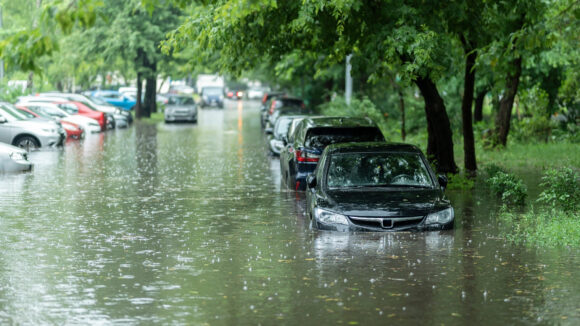DBRS Morningstar experts anticipate increased reliance on government insurance programs as insurers exit catastrophe-prone states.
New commentary from the credit ratings business said these departures could “eventually trigger declines in property valuations in the affected regions if alternative sources of insurance, like the government program, cannot step up.”
“In what some are referring to as a real estate ‘climate bubble,’ there are concerns that dwellings located in high-risk communities may experience a decline in value in the long run if something is not done to adequately fill the coverage gap left by departing private insurers,” said Steven Jellinek, Vice President, Head of Research, North American CMBS.
The commentary’s authors said they do not foresee any immediate rating implications because of the exit of insurers from the affected regions. They did note, however, that individual properties and transactions could be affected if property prices decline because of expensive or unavailable insurance coverage.
Related: Hurricanes Now Twice as Likely to Spin Up From Minor to Whopper, Study Says
Numbers from Morningstar and the U.S. Census Bureau show the states most affected by hurricanes experienced significant population growth in their coastal counties from 1970 to 2020. Florida experienced the highest population growth during that time — a 217% increase — and is the state where most hurricanes make landfall.
Meanwhile, Morningstar reports that insurers have been increasingly exposed to larger and more frequent weather-related losses that are driven by climate change and affected by rising real estate values and higher concentrations of high-value properties in risk-prone areas.
Farmers and other major insurers, including State Farm and Allstate, have said they would stop writing new business or renewals in Florida, California and other states as the industry manages the impact of natural disasters, inflation, rising replacement costs and other loss adjustment expenses.
“With continued coastal population increases and infrastructure development along the hurricane-prone Atlantic and Gulf coastal states, we expect that economic damages and insured losses as a result of tropical storms that make landfall during the annual Atlantic hurricane season will continue to rise,” the Morningstar commentary said.
Related: Report: ‘Climate-Exacerbated Wildfires’ Cost U.S. $394B-$893B Each Year
Morningstar reported that there is a growing scientific consensus that increasing ocean temperatures intensify the devastation of tropical storms. According to Swiss Re, tropical cyclones, storms and flooding have been the main drivers behind global catastrophe losses.
Scientific Reports issued a study last week sharing findings that Atlantic hurricanes are now more than twice as likely to rapidly intensify from minor to major hurricanes. Meanwhile, a new Congressional report from Congress shares that “climate-exacerbated wildfires” cost the nation $394 billion to $893 billion each year in economic costs and damages.
Was this article valuable?
Here are more articles you may enjoy.



 CEOs on Guard as Trump Rattles Companies With Series of Edicts
CEOs on Guard as Trump Rattles Companies With Series of Edicts  Experian: AI Agents Could Overtake Human Error as Major Cause of Data Breaches
Experian: AI Agents Could Overtake Human Error as Major Cause of Data Breaches  Florida Lawmakers Ready for Another Shot at Litigation Funding Limits
Florida Lawmakers Ready for Another Shot at Litigation Funding Limits  SIAA Announces Strategic Partnership With Progressive
SIAA Announces Strategic Partnership With Progressive 

